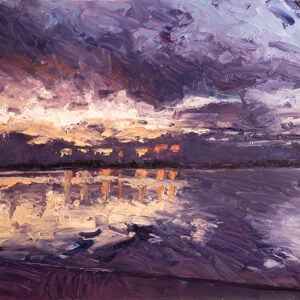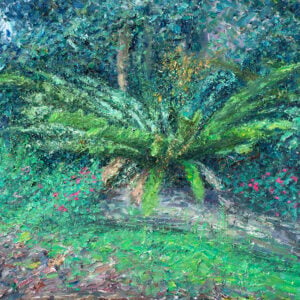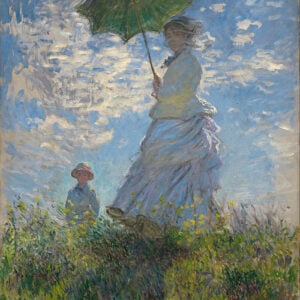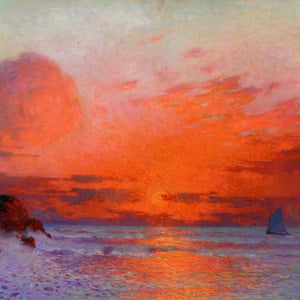I am pleased to have James Gurney share some of his thoughts on art, business and learning. James created the illustrated book series Dinotopia, wrote Color and Light: A Guide for the Realist Painter, writes a daily blog on Gurney Journey and is a skilled artist and teacher, among many other things.
- How Did You Get Started in Art?
- Did You Do Any Formal Art Education?
- If You Were to Start Learning Art All Over Again, Where Would You Start?
- If You Could Recommend One Art Education Book to Beginners, What Would It Be?
- Do You Remember Your First Painting and Do You Still Have It?
- I Notice You Have Been Consistently Blogging for Many Years Now. What Made You Start Blogging and Where Do You Find Inspiration for Things to Write About?
- Do You Sell Your Art, or Do You Focus Mostly on Book Sales and Other Avenues?
- Do You Have a Favorite Medium (Acrylic, Oil, Watercolor, Gouache, Pencil, Pen, Etc)?
- Which Master Artists Inspire You (Passed and Living)?
- With the Rise of Digital Art, Do You Think There Will Always Be a Place for Traditional Mediums?
- For Traditional Artists Looking To Break Into the Fine Art World, Do You Recommend They Seek Gallery Representation or Focus On Building Their Own Audience Through YOUTUBE, Blogs, Social Media, Etc?
- Do You Have Any Other General Business Advice for Aspiring Artists?
- How Do You Generally Prepare for a More Serious Artwork (Do You Do Sketches, Color Studies, Etc)?
- Many Beginner Artists Seem to Worry About Developing a Unique Style. Do You Think It Is Something They Need to Worry About, or Should They Just Be Focusing On Getting Good at the Fundamentals?
- Want to Learn More?
- Thanks for Reading!

How Did You Get Started in Art?
When I was a little kid, drawing meant designing things that I wanted to build in 3D, such as model ships, puppets, and kites. In high school my main mediums were pen and ink, scratchboard, and calligraphy. No one taught these; I just figured them out on my own. I launched a freelance business doing lettering and illustrations for menus and wedding invitations.
Did You Do Any Formal Art Education?
Before I went to art school, I studied liberal arts at the University of California, Berkeley. I took courses in a lot of subjects there, and fell in love with paleontology, archaeology, and history. After I graduated from Berkeley, I continued to art school. But in the early 1980s, they weren’t delivering enough useful information to make it worth the cost. I soon dropped out, realizing I could learn more from old art instruction books. I drew at the zoo and the natural history museum, and I adventured across America on freight trains with a sketchbook. My big breakthrough was getting a job as a background painter for an animated film called “Fire and Ice” with Ralph Bakshi and Frank Frazetta. Six hundred paintings later, I knew how to paint, and I had enough cash to launch my freelance illustration business.

If You Were to Start Learning Art All Over Again, Where Would You Start?
There are a lot of tutorial videos available now. I think I would watch a bunch of them, then read books, copy from the masters, and draw and paint from life. Even though the internet has opened up new opportunities for learning, I believe the best path to mastery is the same as it has always been, namely a mix of: 1) Paint from life, 2) Sketch from imagination, and 3) Copy from earlier masters.

If You Could Recommend One Art Education Book to Beginners, What Would It Be?
Creative Illustration by Andrew Loomis is still the best overall instructional book for composition, color, and painting. I’m glad it’s still in print.
Do You Remember Your First Painting and Do You Still Have It?
I still have a few of my first paintings in gouache, watercolor, and oil. When I look at them, I can remember those feelings of frustration as I struggled with the basics.

I Notice You Have Been Consistently Blogging for Many Years Now. What Made You Start Blogging and Where Do You Find Inspiration for Things to Write About?
Blogging is a daily discipline of thinking. I like being responsible for getting a basic fact across to a community of other curious people, who share what they discover with me.
Do You Sell Your Art, or Do You Focus Mostly on Book Sales and Other Avenues?
Yes, I sell a few original paintings each year. You can find them on my original art blog, jamesgurneyoriginalart.blogspot.com However, most of my income is from books, videos, and licensing.

Do You Have a Favorite Medium (Acrylic, Oil, Watercolor, Gouache, Pencil, Pen, Etc)?
I love them all and use them all. I do most of my studio illustrations in oil. I like gouache, which can be used in combination with many other media.

Which Master Artists Inspire You (Passed and Living)?
As a kid, my heroes were M.C. Escher and Norman Rockwell. Most of the artists who inspire me are unfortunately no longer living. Lately the ones I keep returning to are: Adolph Menzel, Anders Zorn, Joaquín Sorolla, John Singer Sargent, and Tom Lovell.

With the Rise of Digital Art, Do You Think There Will Always Be a Place for Traditional Mediums?
First, let’s talk about the terminology in your question. I don’t use the term “traditional” the way you do. The imagery of physical painters is not necessarily traditional. And even though I respect tradition, there’s nothing necessarily traditional about the way I use physical materials (such as painting gouache over casein, or combining watercolor with water-soluble colored pencils).
But I see what you’re asking. Some analog methods are probably gone for good, such as paste-up with rubber cement, Craft-tint, and photomechanical typesetting. But other ways of making art have never gone away or are staging a comeback: gouache, watercolor, fountain pens, sign painting, calligraphy, manual typewriters, and sketchbooks of all kinds. Never in my life have I seen as many kinds of sketchbooks available as there are today. The Internet has fostered a fierce revival for hand skills, and the results are often more satisfying for both the artist and the audience.
I remember when digital techniques were first emerging, physical solutions seemed a little embarrassing and cheap and outdated. Now the situation has reversed. While cutting-edge digital art created by leading artists will always be impressive and ground-breaking, the bottom end of the market-produced by the less able artists and by clients with tight budgets-is now accomplished digitally. As a result, digital methods are associated with work that is cheap and embarrassing.
Physical paintings are the only kind that museums want to exhibit and the only valued originals that collectors want to pay money for. When Frank Frazetta painted his barbarian paperback covers, he was only paid a few hundred dollars for the illustration commission, but now, his originals have sold for over a million dollars. That source of value is lost to digital artists.
One also wonders how long the authoring software will remain accessible. I can open any of my sketchbooks and they’re in perfect shape, but I wonder if people can still open their old files in MacPaint or KidPix? If you don’t keep paying Adobe, how will you be able to access your .psd files? So you might properly ask: “Will there always be a place in the future for digital mediums?”
In truth the two will always live side by side in some form. I’m inspired in my physical painting by things I’ve seen digital artists create. Some of the most interesting work being done now is some combination of digital and physical media, and hopefully the two modes of making art will inspire each other.

For Traditional Artists Looking To Break Into the Fine Art World, Do You Recommend They Seek Gallery Representation or Focus On Building Their Own Audience Through YOUTUBE, Blogs, Social Media, Etc?
I’m not the best person to ask about galleries, as sales of my originals tend to be through auctions and special sales. Regardless of how an artist markets his or her own work, building an audience through social media is a good idea.
Do You Have Any Other General Business Advice for Aspiring Artists?
Diversify your sources of income and have a space where you can experiment with new ideas. Deliver on time, be nice to work with, and do good work. Be the best at what you do best.

How Do You Generally Prepare for a More Serious Artwork (Do You Do Sketches, Color Studies, Etc)?
I go through all those stages and more: developing thumbnails, color sketches, maquettes, models in costume, photo research, on-location sketching, and charcoal comprehensives. There are no shortcuts and no miraculous improvisation. My method is chronicled in my book Imaginative Realism: How to Paint What Doesn’t Exist, and it’s thoroughly covered on my GurneyJourney blog. Just use the search box or the index tabs.

Many Beginner Artists Seem to Worry About Developing a Unique Style. Do You Think It Is Something They Need to Worry About, or Should They Just Be Focusing On Getting Good at the Fundamentals?
The best advice for a student is to forget about style. That will come naturally if you concentrate instead on the fundamentals. Try to learn directly from nature by means of close observation and humility. Don’t model your work after any other artist, especially a living artist. If you must study the work of other artists, pick heroes from the past, and look at many different ones, not just one. Don’t fall in love with technique. Try to make your art like a window to another world. Spend your time looking at nature more than art museums, websites, TV, or movies. No one wants art that is secondhand.

Want to Learn More?
You might be interested in my Painting Academy course. I’ll walk you through the time-tested fundamentals of painting. It’s perfect for absolute beginner to intermediate painters.
Thanks for Reading!
I appreciate you taking the time to read this post and I hope you found it helpful. Feel free to share it with friends.
Happy painting!
Dan Scott

Draw Paint Academy







Thanks for this latest share. Lots of valuable information about James Gurney.
I admire everything you have posted on your site — the best information in all my
searching on the Internet. I’ll continue to read everything you publish and follow
the best advice available today. Just honest and true. AMAZING.
Hi Patricia
Thanks for your kind words! I really appreciate them.
Happy to hear you enjoyed this post and the others I put out.
Thanks
Dan
Thank You as always
My pleasure Hope! Dan
Thanks Dan,
That was very enlightening. I was happily surprised by James’ attitude to traditional art
(somehow pictured him as being a new age digital artist and not much else)
Just goes to show us not to pre judge people on what you think and don’t necessarily know, I’m still evolving even at my age. 🙂
Thanks again, Dave Malt (AUSTRALIA)
Glad to hear this Dave! Dan
Many many thanks Dan — Ann Ussishkin (Israel)
No problem Ann.
Thanks Dan, I enjoyed reading this interview. James’ work was a favorite when my boys were growing up.
Glad to hear you enjoyed this. Thanks Tracey!
Wonderful interview Dan
Thanks Noela! Glad you liked it. Dan
Your flag painting is glorious!
An interesting read. Thank you again.
No problem Dianne. Hope you enjoyed it. Dan
Thanks Dan—I already haves James’s Imaginative Realism book and this makes me want to take it out and read it again. …Brett
James is a awesome artist and teacher. I am a high school artist and show his work to my students often. As I was reading this, I have Loomis’s book Creative Illustration opened on my teaching table! Great interview!